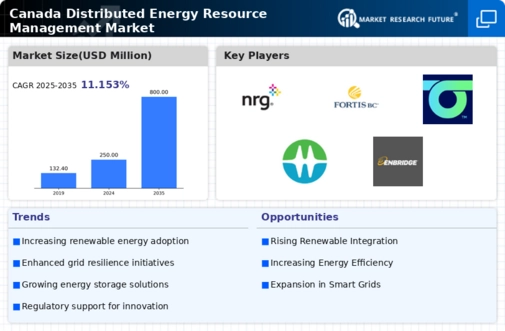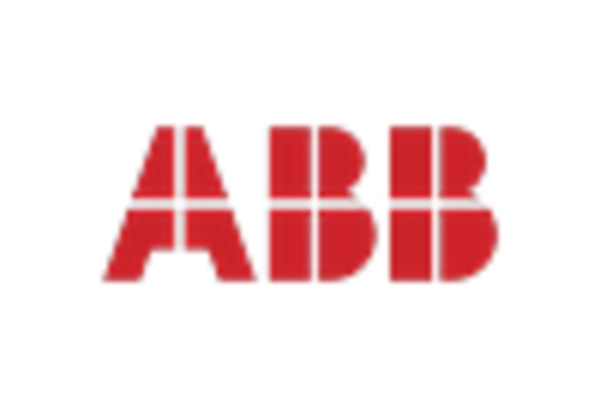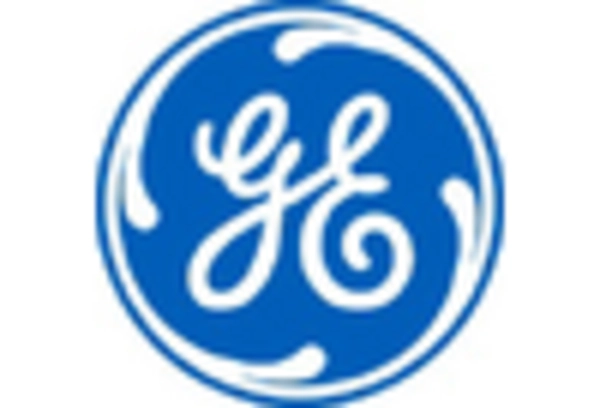Government Incentives and Policies
The Canadian government actively promotes the distributed energy-resource-management market through various incentives and policies. Programs such as the Clean Energy Fund and the Renewable Energy Standard Offer Program encourage investments in renewable energy technologies. These initiatives aim to reduce greenhouse gas emissions and enhance energy security. In 2025, the government allocated approximately $1.5 billion to support clean energy projects, which is expected to stimulate growth in the distributed energy-resource-management market. Furthermore, provincial governments are also implementing their own policies to facilitate the integration of distributed energy resources, thereby creating a favorable regulatory environment for market participants.
Decentralization of Energy Production
The trend towards decentralization in energy production is reshaping the landscape of the distributed energy-resource-management market in Canada. With advancements in technology, smaller-scale energy generation systems, such as microgrids and community solar projects, are becoming increasingly viable. This decentralization allows for localized energy production, which enhances resilience and reduces transmission losses. In 2025, it is projected that decentralized energy systems will account for approximately 25% of total energy generation in Canada. This shift not only empowers communities but also fosters innovation within the distributed energy-resource-management market, as new business models and partnerships emerge.
Rising Consumer Demand for Energy Independence
There is a noticeable shift in consumer preferences towards energy independence in Canada, which is significantly impacting the distributed energy-resource-management market. As individuals and businesses seek to reduce reliance on traditional energy sources, the demand for distributed energy resources, such as solar panels and battery storage systems, is on the rise. In 2025, it is estimated that residential solar installations will increase by 30%, reflecting a growing trend towards self-sufficiency in energy production. This consumer-driven demand is likely to propel the distributed energy-resource-management market forward, as more Canadians invest in renewable energy solutions.
Technological Innovations in Energy Management
Technological advancements play a crucial role in shaping the distributed energy-resource-management market in Canada. Innovations in energy management systems, such as advanced metering infrastructure and demand response technologies, enhance the efficiency of energy distribution and consumption. In 2025, the market for energy management systems is projected to reach $2 billion, reflecting a growing demand for smart solutions. These technologies enable consumers to optimize their energy usage, reduce costs, and contribute to grid stability. As more Canadians adopt these technologies, the distributed energy-resource-management market is likely to experience significant growth, driven by increased efficiency and reliability.
Environmental Awareness and Sustainability Goals
Increasing environmental awareness among Canadians is driving the distributed energy-resource-management market. As climate change concerns grow, individuals and organizations are prioritizing sustainability in their energy choices. In 2025, surveys indicate that over 70% of Canadians are willing to pay a premium for renewable energy sources. This shift in consumer behavior is prompting utilities and energy providers to adapt their offerings to meet sustainability goals. Consequently, the distributed energy-resource-management market is expected to expand as more stakeholders seek to align with environmentally friendly practices and reduce their carbon footprints.

















Leave a Comment